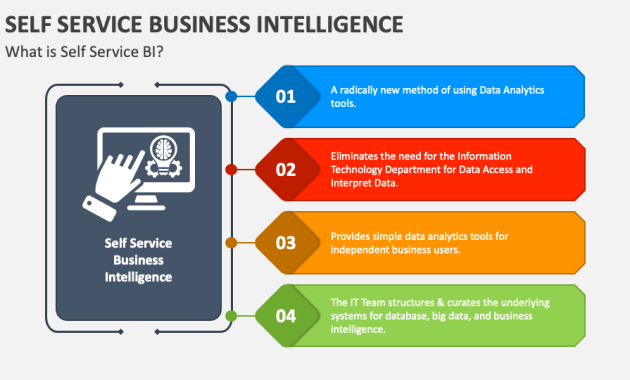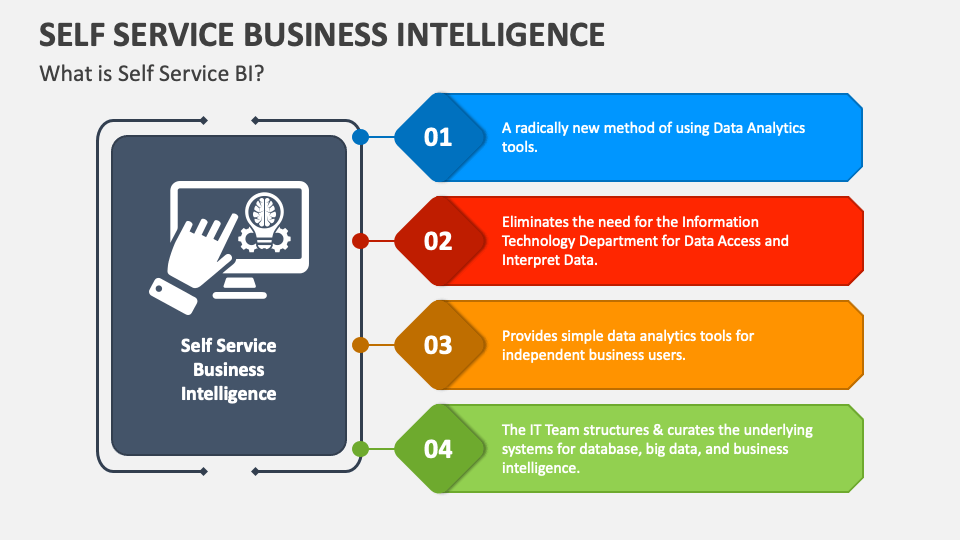
Self-Service Business Intelligence Software: Unveiling the Narrative Hidden in Your Data
In today’s data-driven world, businesses are drowning in information. However, raw data alone is often meaningless. It’s the ability to extract insights and communicate them effectively that separates successful organizations from those struggling to keep up. This is where self-service business intelligence (BI) software comes into play. This powerful tool empowers users to analyze data and, crucially, to tell a story with it. This article delves into the world of self-service BI, exploring how it’s transforming the way businesses operate and make decisions, specifically focusing on how it enables the telling of compelling data-driven narratives.
The Rise of Self-Service BI
Traditional BI solutions often required specialized technical expertise. This meant that data analysis was typically confined to a select group of analysts. The process could be slow, requiring multiple steps and often involving IT departments. Self-service business intelligence software has revolutionized this landscape. It puts the power of data analysis directly into the hands of business users, regardless of their technical background. This shift has led to increased agility, faster decision-making, and a more data-literate workforce. The accessibility of these tools has democratized data, allowing anyone to explore, analyze, and visualize information.
Key Features of Effective Self-Service BI Software
The best self-service business intelligence software offers a range of features designed to simplify data analysis and storytelling. These include:
- Intuitive User Interface: Easy-to-use interfaces with drag-and-drop functionality make it simple for non-technical users to analyze data.
- Data Connectivity: The ability to connect to various data sources, including databases, spreadsheets, cloud services, and more, is essential.
- Data Preparation: Tools for cleaning, transforming, and preparing data for analysis are crucial.
- Data Visualization: A wide array of charts, graphs, and dashboards allows users to visualize data and identify trends.
- Interactive Dashboards: The ability to create interactive dashboards that allow users to explore data in real-time is key.
- Collaboration Features: Features that allow users to share insights and collaborate with others are important.
- Mobile Access: Accessing dashboards and reports on mobile devices provides flexibility and on-the-go insights.
Data Storytelling: The Heart of Self-Service BI
The true value of self-service business intelligence software lies in its ability to facilitate data storytelling. Data storytelling is the art of using data to create a narrative that is both informative and engaging. It’s about transforming raw numbers into compelling insights that resonate with the audience. This involves not only presenting data but also providing context, drawing conclusions, and recommending actions. The best software empowers users to communicate their findings effectively. This is done through clear visualizations, concise summaries, and a logical flow of information. Without this ability, data is just noise. Effective storytelling ensures that insights are understood, remembered, and acted upon.
Building a Data-Driven Narrative
Creating a compelling data-driven narrative involves several key steps:
- Define the Objective: Clearly define the question you are trying to answer or the problem you are trying to solve. What is the main point you are trying to make?
- Gather and Prepare Data: Collect the relevant data from various sources and prepare it for analysis.
- Analyze the Data: Use the BI software to explore the data, identify trends, and uncover insights.
- Choose the Right Visualizations: Select the most appropriate charts and graphs to effectively communicate your findings.
- Craft the Narrative: Structure your presentation to tell a story, using a logical flow and clear explanations.
- Provide Context: Always provide context for your data, explaining why the insights matter and what actions should be taken.
- Share and Collaborate: Share your findings with stakeholders and collaborate to make data-driven decisions.
Benefits of Using Self-Service BI Software
Implementing self-service business intelligence software offers a multitude of benefits for businesses of all sizes:
- Improved Decision-Making: Data-driven insights empower better and faster decisions.
- Increased Efficiency: Automating data analysis reduces the time spent on manual tasks.
- Enhanced Collaboration: Shared dashboards and reports promote collaboration across teams.
- Greater Agility: The ability to quickly analyze data allows businesses to adapt to changing market conditions.
- Cost Savings: Reduced reliance on specialized analysts can lead to significant cost savings.
- Data Literacy: Increased data literacy across the organization.
Choosing the Right Self-Service BI Software
Selecting the right self-service business intelligence software is crucial for success. Consider the following factors when making your decision:
- Ease of Use: The software should have an intuitive interface that is easy for all users to navigate.
- Data Connectivity: Ensure the software can connect to all of your data sources.
- Features: Evaluate the features offered, such as data preparation, visualization, and collaboration tools.
- Scalability: The software should be able to scale to meet your growing data needs.
- Cost: Consider the pricing model and ensure it fits your budget.
- Support: Look for software that offers excellent customer support and training resources.
Examples of Self-Service BI Software in Action
Several industries are successfully leveraging self-service business intelligence software to tell compelling stories:
- Retail: Retailers use BI to analyze sales data, identify customer trends, and optimize inventory.
- Healthcare: Healthcare providers use BI to track patient outcomes, improve operational efficiency, and manage costs.
- Marketing: Marketers use BI to analyze campaign performance, understand customer behavior, and personalize marketing efforts.
- Finance: Financial institutions use BI to monitor financial performance, assess risk, and detect fraud.
- Manufacturing: Manufacturers use BI to track production efficiency, optimize supply chains, and identify potential issues.
These are just a few examples of how businesses are using self-service business intelligence software. Its versatility makes it a valuable tool for any organization.
The Future of Self-Service BI
The future of self-service business intelligence software is bright. We can expect to see continued advancements in:
- Artificial Intelligence (AI) and Machine Learning (ML): AI and ML will automate data analysis and provide predictive insights.
- Natural Language Processing (NLP): NLP will enable users to interact with data using natural language queries.
- Enhanced Data Visualization: More sophisticated and interactive visualizations will make it easier to understand complex data.
- Integration with Other Tools: Seamless integration with other business applications will become more common.
These advancements will further empower users to tell compelling stories with data and make data-driven decisions.
Conclusion: Data Storytelling as a Competitive Advantage
Self-service business intelligence software is no longer a luxury. It is a necessity for businesses that want to thrive in today’s data-driven landscape. By empowering users to analyze data and tell a story, this software enables organizations to make better decisions, improve efficiency, and gain a competitive advantage. Embracing self-service BI is not just about adopting a new technology; it’s about fostering a data-driven culture that values insights and the narratives they create. The ability to extract and communicate meaning from data is now a core competency for any forward-thinking organization. The most successful businesses will be those that master the art of data storytelling. They will use their data to not only understand the present, but also to predict the future. They will use self-service business intelligence software to do so.
[See also: Related Article Titles]

